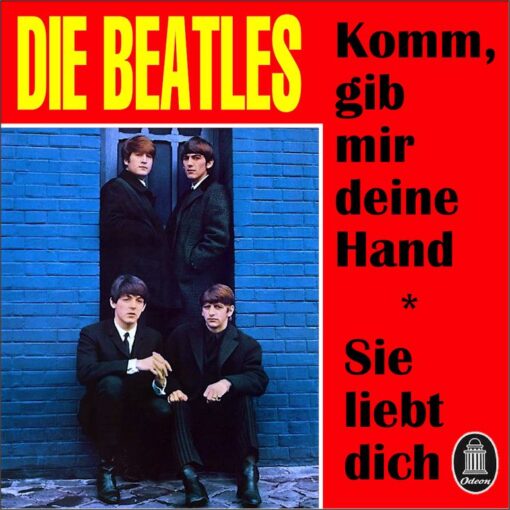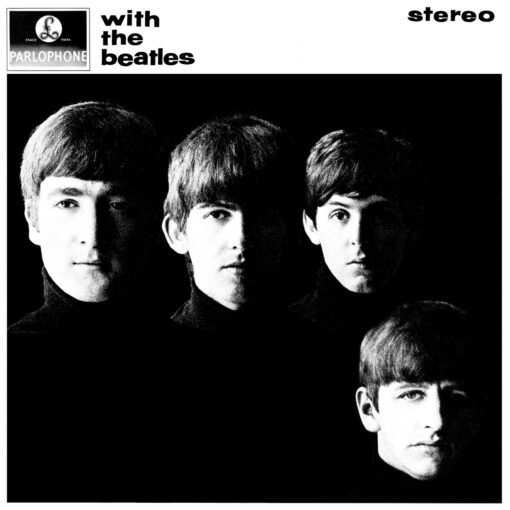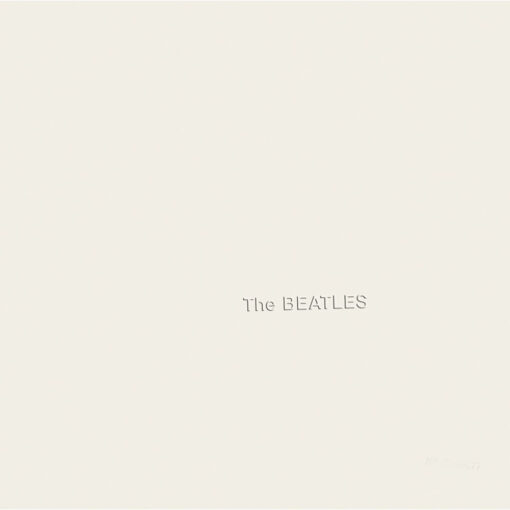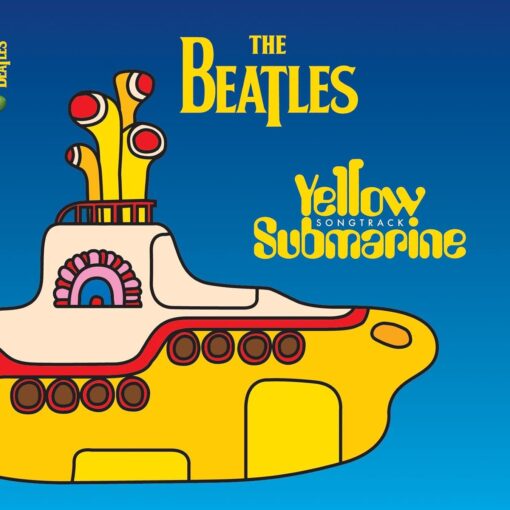- Published in 1967
- Author: Lennon/McCartney
- Track 1 on “Sgt. Pepper’s Lonely Hearts Club Band“
- Track 3 on “The Beatles 1967-1970” (Blue Album)
JOHN 1980: “‘Sgt. Pepper’ is Paul after a trip to America and the whole West Coast long-named group thing was coming in. You know, when people were no longer the Beatles or the Crickets– they were suddenly Fred And His Incredible Shrinking Grateful Airplanes, right? So I think he got influenced by that and came up with this idea for the Beatles.”
PAUL 1984: “It was an idea I had, I think, when I was flying from L.A. to somewhere. I thought it would be nice to lose our identities, to submerge ourselves in the persona of a fake group. We would make up all the culture around it and collect all our heroes in one place. So I thought, A typical stupid-sounding name for a Dr. Hook’s Medicine Show and Traveling Circus kind of thing would be ‘Sgt. Pepper’s Lonely Hearts Club Band.’ Just a word game, really.”
PAUL circa-1994: “We were fed up with being Beatles. We really hated that fucking four little mop-top boys approach. We were not boys, we were men. It was all gone, all that boy shit, all that screaming, we didn’t want anymore, plus, we’d now got turned on to pot and thought of ourselves as artists rather than just performers… then suddenly on the plane I got this idea. I thought, ‘Let’s not be ourselves. Let’s develop alter egos so we’re not having to project an image which we know. It would be much more free.’”
About “Sgt. Pepper’s Lonely Hearts Club Band”
On the homonymous album, the song “Sgt. Pepper’s Lonely Hearts Club Band” appears twice: as the opening track (followed by “With a Little Help from My Friends“), and as “Sgt. Pepper’s Lonely Hearts Club Band (Reprise)“, the penultimate track (followed by “A Day in the Life“). It introduces the fictional band that performs on the album as its title song.
After a holiday in November 1966, McCartney came up with the idea of role-playing all of the Beatles’ alter egos in the “Lonely Hearts Club Band” and performing a concert in front of an audience. Roadie Mal Evans innocently asked McCartney what the letters “S” and “P” on their in-flight meal trays meant, and McCartney replied that it stood for salt and pepper. It was from here that the concept of Sgt. Pepper’s Lonely Hearts Club Band and the song were born.
Neil Aspinall, the group’s road manager, suggested using Sgt. Pepper as the compère and adding a reprise at the end. Although the song is officially credited to Lennon–McCartney, John Lennon credited McCartney with the idea for Sgt. Pepper. The Beatles recorded the track in Abbey Road’s studio 2, with George Martin producing and Geoff Emerick engineering. On 6 March 1967, after three more sessions, the recording was completed. Work on the song began on 1 February 1967.
Aside from its original album release, “Sgt. Pepper’s Lonely Heart’s Club Band” has been included on numerous Beatles singles and compilation albums. Several other artists have also performed the song, including Jimi Hendrix and U2, as well as a comic interpretation by Bill Cosby, using the opening of John Philip Sousa’s Washington Post March.
Meaning of “Sgt. Pepper’s Lonely Hearts Club Band”
The song serves as both an introduction and a conceptual cornerstone. It unveils the fictional musical collective known as the “Sgt. Pepper’s Lonely Hearts Club Band.” This imaginative creation allows The Beatles to transcend their usual artistic personas and experiment with diverse musical styles and thematic concepts. By doing so, it opens a gateway for them to push the boundaries of their creative expression.
Beyond its conceptual significance, the song also carries a social commentary. It resonates with the countercultural spirit of the 1960s, embodying the idea of establishing an inclusive, alternative space where individuals can come together, share in a sense of belonging, and experience camaraderie. This sentiment is echoed in the line, “It’s wonderful to be here, it’s certainly a thrill.“
Furthermore, “Sgt. Pepper’s Lonely Hearts Club Band” is a celebration of music and performance. It exudes an air of excitement and anticipation for the auditory journey that the album promises to deliver. In this sense, the song serves as an overture, inviting listeners into a world of musical innovation and exploration.
Ultimately, “Sgt. Pepper’s Lonely Hearts Club Band” stands as a symbolic and imaginative curtain-raiser for the entire album. It establishes the foundation for the musical experimentation and thematic exploration that characterize “Sgt. Pepper’s Lonely Hearts Club Band” as a groundbreaking work of art. The song exemplifies The Beatles’ innovative and visionary approach to music, transcending conventional album structures and inviting listeners on a transformative auditory journey.
Personnel
- Paul McCartney – lead vocal, bass guitar, lead guitar
- John Lennon – harmony vocal, rhythm guitar
- George Harrison – harmony vocal, lead/rhythm guitar
- Ringo Starr – drums
- George Martin – organ
- Neill Sanders – French horn
- James W. Buck – French horn
- Tony Randell – French horn
- John Burden – French horn



